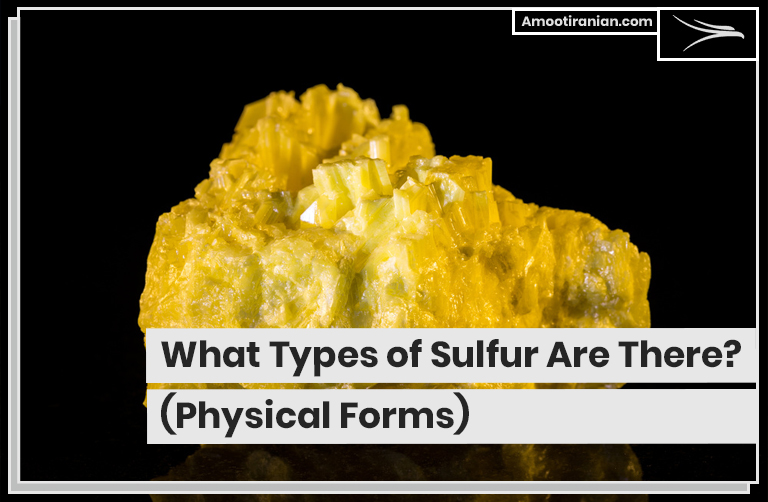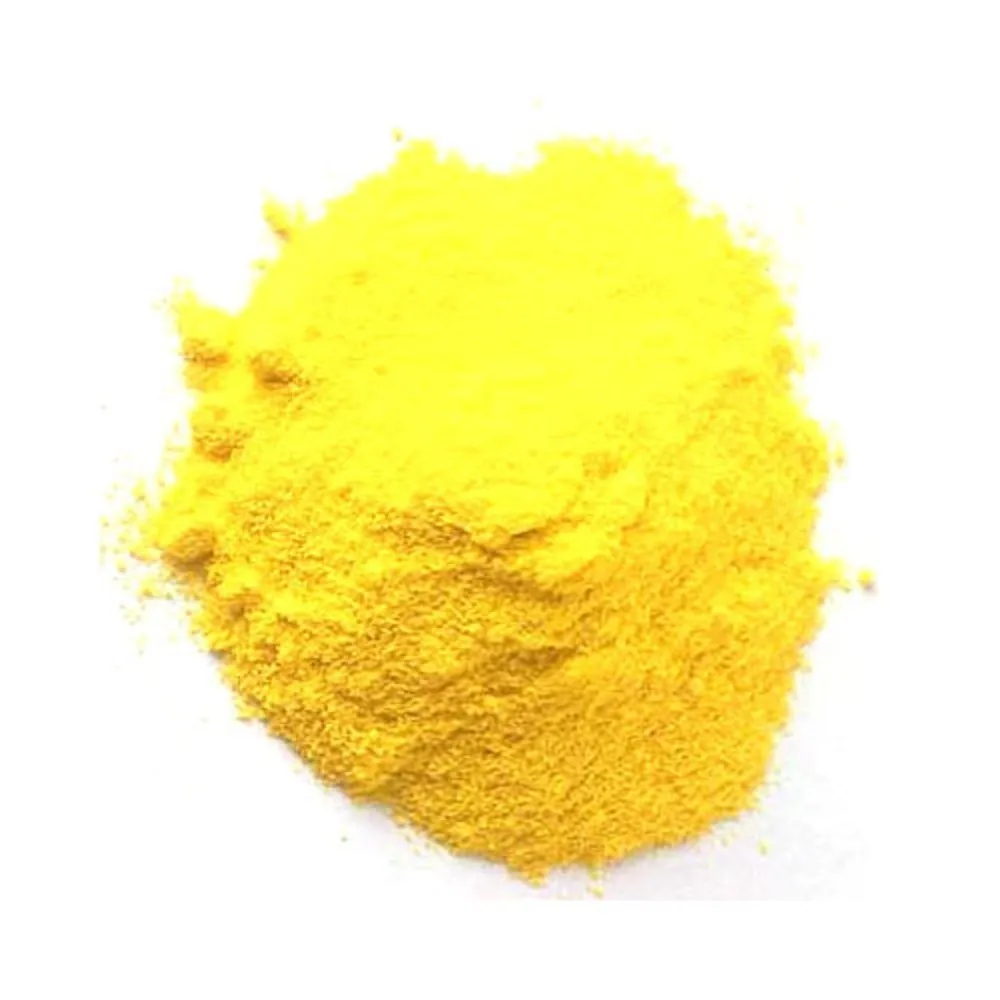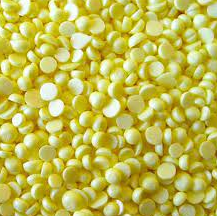.

.
Sulfur is a non-metallic chemical element with the symbol S and atomic number 16.
It is an abundant, multivalent element that is found in many minerals, especially in sulfides and sulfates.
Sulfur is a yellow, brittle, and odorless solid that is insoluble in water but soluble in carbon disulfide.
Various physical forms of sulfur including granular, powder, lump, and prilled are explained in this page.
.
How Many Types of Sulfur Are There? (Physical Forms)
1_Granular Sulfur
.

.
Granular sulfur is a physical form of elemental sulfur that has been ground into small, uniform particles or granules. The granules are typically between 1 and 5 millimeters in size and are yellow in color.
.
Granular sulfur is often used in agriculture as a soil amendment to provide plants with sulfur, which is an essential nutrient for growth and development.
Granular sulfur can be applied to the soil by broadcasting it over the surface or by incorporating it into the soil using tillage equipment.
When granular sulfur is added to the soil, it reacts with moisture and microorganisms in the soil to produce sulfuric acid.
The sulfuric acid lowers the soil pH, making it more acidic and creating a better environment for plants that prefer acidic soil conditions.
In addition to its use as a soil amendment, granular sulfur is also used in the manufacturing of sulfuric acid, which is an important industrial chemical used in many different applications.
It is also used in the production of pesticides and fungicides, as well as in the treatment of wastewater and the purification of metals.
.
2_Lump Sulfur
.

.
Lump sulfur is a physical form of elemental sulfur that occurs naturally in large, irregular-shaped pieces. These pieces can vary in size from small chunks to large boulders and are typically yellow in color.
.
Lump sulfur is often found near hot springs, volcanoes, and other geothermal features, and can be mined from underground deposits or harvested from surface deposits.
Lump sulfur is a raw material used in the production of many different sulfur-containing compounds and products, including sulfuric acid, fertilizers, and pesticides.
To convert lump sulfur into these other products, it must first be melted and then processed using various chemical reactions.
Because of its high sulfur content, lump sulfur is also sometimes used as a fuel source for industrial processes, particularly in areas where other fuels may be in short supply.
However, burning sulfur can produce sulfur dioxide gas, which is a major contributor to air pollution and can have harmful effects on human health and the environment.
As a result, the use of lump sulfur as a fuel source is generally discouraged in favor of cleaner, more sustainable alternatives.
.
3_Powdered Sulfur
.

.
Sulfur powder is a finely ground form of elemental sulfur. It is typically a bright yellow powder with a slightly pungent odor.
.
Sulfur powder is used in a variety of applications, including as a pesticide or fungicide in agriculture, as an ingredient in the production of sulfuric acid, and as a component in the manufacturing of rubber products.
.
In agriculture, sulfur powder is often used as a natural alternative to chemical pesticides and fungicides. It works by disrupting the growth and reproduction of pests and pathogens, helping to protect crops from damage and disease.
Sulfur powder can be applied to crops as a dust or spray, and is effective against a wide range of pests and diseases.
.
Sulfur powder is also an important raw material in the production of sulfuric acid, which is used in a variety of industrial processes.
In this application, sulfur powder is typically burned in air to produce sulfur dioxide gas, which is then converted into sulfuric acid using various chemical reactions.
.
In addition to its industrial and agricultural uses, sulfur powder has also been used for centuries as a traditional remedy for various ailments.
It is believed to have antifungal, antibacterial, and anti-inflammatory properties, and has been used to treat conditions such as acne, eczema, and psoriasis.
.
However, it is important to note that the use of sulfur powder as a medical treatment should always be done under the guidance of a qualified healthcare professional.
.
4_Prilled Sulfur
.

.
Prilled sulfur is a physical form of elemental sulfur that has been melted and then solidified into small beads or pellets. The pellets are typically between 2 and 6 millimeters in diameter and are yellow in color.
.
Prilled sulfur is often used as a raw material in the production of fertilizers, particularly those that are high in sulfur content.
When prilled sulfur is used in fertilizer production, it is typically blended with other nutrients such as nitrogen and phosphorus to create a balanced fertilizer blend.
The pellets can be easily mixed and transported, and are designed to dissolve slowly in the soil to provide a steady source of sulfur to plants over time.
.
Prilled sulfur can also be used in other industrial applications, such as in the production of sulfuric acid and other sulfur-containing chemicals.
It is sometimes used as a fuel source in certain industrial processes, but its use for this purpose is generally discouraged due to the environmental and health risks associated with sulfur dioxide emissions.
.
Overall, prilled sulfur is an important industrial material that is widely used in the production of fertilizers and other products that require high levels of sulfur.
Its small, uniform size and slow-release properties make it an effective and convenient way to deliver sulfur nutrients to plants and other organisms.
